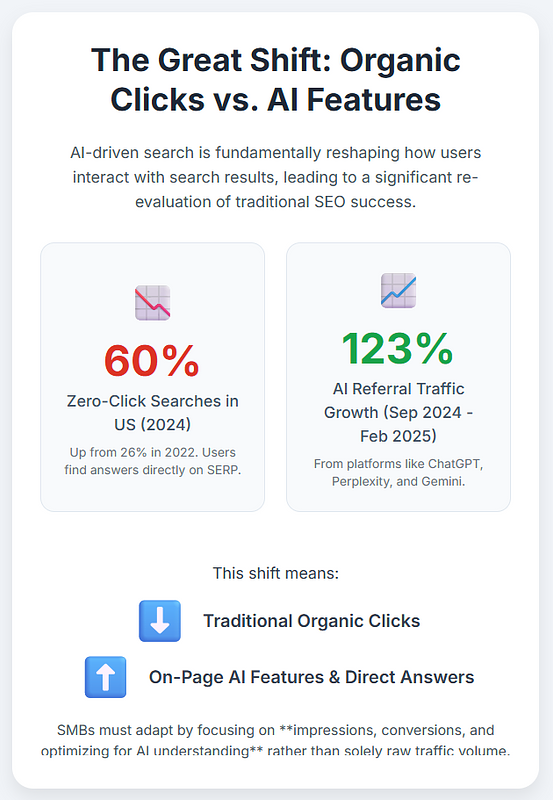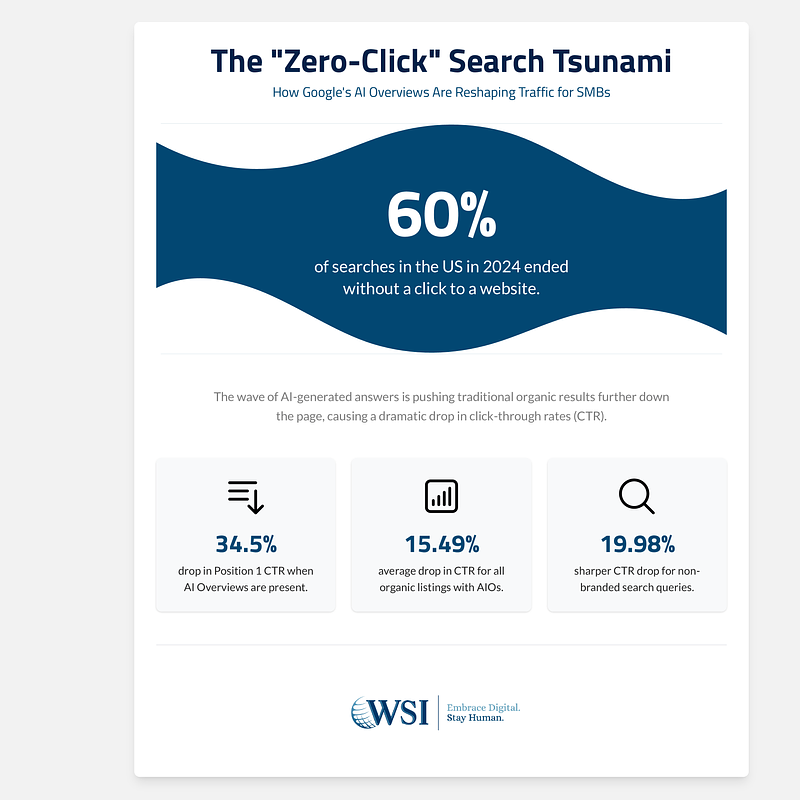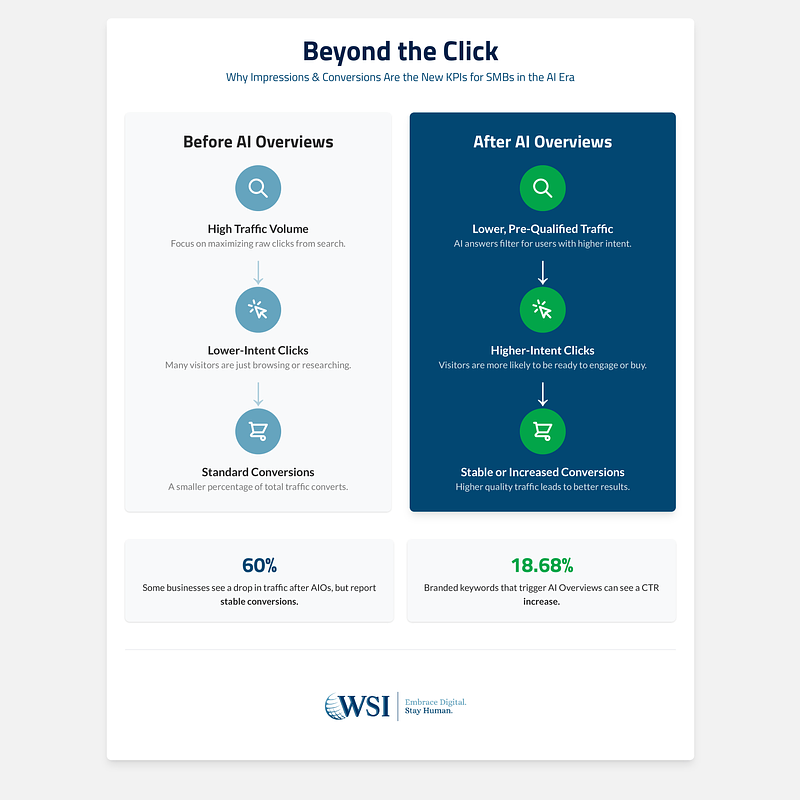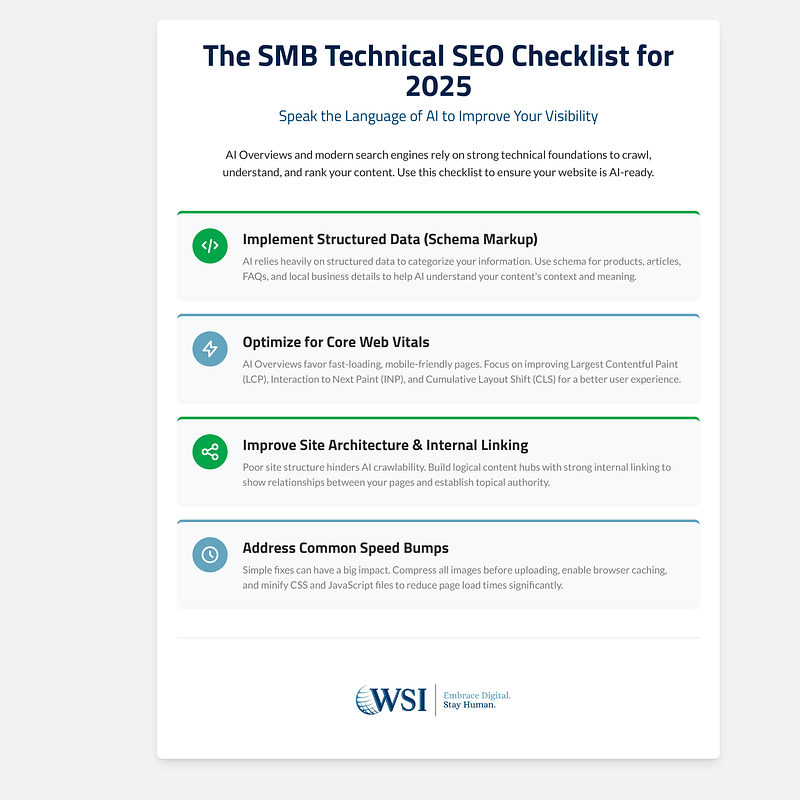New study reveals the dramatic rise of zero-click search, and what small businesses must do to stay visible.
Zero-click searches now account for nearly 60% of Google activity, signalling a tectonic shift in how people engage with search results and how the landscape of online visibility has fundamentally changed. Small and midsize businesses (SMBs), as well as top-ranked listings, are facing an unprecedented challenge in driving traffic to their website as AI Overviews, rich snippets, visual answers, and map packs dominate the results page.
A new AI-powered research report from WSI reveals the escalating challenge of online visibility in the AI search era — particularly for local service providers and B2B SMBs.
If you’re wondering how this plays out in practice, imagine a local bakery that shows up first in Google search for “gluten-free cupcakes near me.” In the past, that search might have driven dozens of clicks a day. Now, users see the bakery’s hours, photos, reviews, even its best-selling items—all without clicking through. The visibility is there, but the traffic is gone.
This shift—where users get what they need directly on the results page—is forcing a new conversation around what it really means to “show up” in search.
Key Findings from the Report:
- 58% of Google searches now result in zero clicks to external websites
- AI-driven SERP features, such as AI Overviews, are absorbing user attention and reducing engagement with traditional “blue” links
- Local businesses and B2B SMBs are seeing the sharpest drops in organic engagement in years
This profound shift underscores a new reality for online visibility. Ranking well is no longer enough. Your ability to be found online now depends on relevance, adaptability, and showing up across the evolving search experience—not just in the top ten results.
Cheryl Baldwin, Director of Marketing & Communications, WSI
How SMBs Can Adapt to the Zero-Click Search World
The report outlines three practical steps small and medium-sized businesses can take to stay visible as AI-driven search reshapes how users find information online:
- Start Structuring Your Content for AI Overviews: Drop the paragraphs and paragraphs of text when you're writing a blog post or web page. Instead, structure website content to answer common customer questions clearly and directly. Use schema markup, FAQ formats, listicles, and concise language that AI models and search engines can easily extract and display.
- Strengthen Your Company’s Digital Footprint Across the Web: Visibility now depends on more than just your website. Businesses must cultivate a strong presence on social media, industry directories, review platforms, online aggregators, and emerging chat-based interfaces— all of which feed into how AI systems assess credibility.
- Align Your Content with Real User Intent, Not Just Keywords: Move beyond keyword density. Create content that mirrors how people search and anticipates user questions. Ensure your content provides real, comprehensive answers. This will increase the chances of being cited by AI engines like ChatGPT and Perplexity.
Search is becoming more about conversation than competition. Businesses that adapt and align with how people ask questio—and how AI interprets those questions, will have the edge.
Cheryl Baldwin, Director of Marketing & Communications, WSI
You can dive deeper into these learnings in our blog post, AI Search Is Reshaping SEO: How SMBs Can Win in the Zero-Click Era.
About WSI
WSI is a global network of digital marketing and AI experts dedicated to helping businesses grow. With three decades of experience and a presence worldwide, WSI leverages cutting-edge technology and AI-driven strategies to drive measurable success. We aim to empower businesses with innovative digital solutions while maintaining a human-centered approach. Our motto, “Embrace Digital. Stay Human,” reflects our mission to unlock a world of possibility for those we serve.







